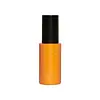What's inside
What's inside
 Key Ingredients
Key Ingredients

 Benefits
Benefits

 Concerns
Concerns

No concerns
 Ingredients Side-by-side
Ingredients Side-by-side

Water
Skin ConditioningDisodium Cocoyl Glutamate
CleansingNiacinamide
SmoothingGlycerin
HumectantDisodium Cocoamphodiacetate
CleansingDecyl Glucoside
CleansingXanthan Gum
EmulsifyingSodium Hyaluronate
HumectantMyrciaria Dubia Fruit Extract
Skin ConditioningSodium Ascorbyl Phosphate
AntioxidantPhenoxyethanol
PreservativeCitric Acid
BufferingEthylhexylglycerin
Skin ConditioningPotassium Sorbate
PreservativeTocopherol
AntioxidantWater
Skin ConditioningHomosalate
Skin ConditioningDiethylamino Hydroxybenzoyl Hexyl Benzoate
UV FilterZinc Oxide
Cosmetic ColorantBis-Ethylhexyloxyphenol Methoxyphenyl Triazine
Skin ConditioningCaprylyl Methicone
Skin ConditioningDimethicone
EmollientPropylene Glycol
HumectantC12-15 Alkyl Benzoate
AntimicrobialCaprylic/Capric Triglyceride
MaskingPhytosteryl/Octyldodecyl Lauroyl Glutamate
Skin ConditioningCurcuma Longa Rhizome Oil
Skin ConditioningSaccharide Isomerate
HumectantIsododecane
EmollientGlucosyl Hesperidin
HumectantMelissa Officinalis Leaf Extract
Skin ConditioningHordeum Distichon Extract
Skin ProtectingCaesalpinia Spinosa Fruit Pod Extract
Glyceryl Caprylate
EmollientDimethiconol
EmollientHydroxyethyl Acrylate/Sodium Acryloyldimethyl Taurate Copolymer
Emulsion StabilisingSodium Acrylates Copolymer
Helianthus Annuus Sprout Extract
Skin ConditioningPolyhydroxystearic Acid
EmulsifyingLauryl Glucoside
CleansingIsohexadecane
EmollientCetearyl Alcohol
EmollientCetearyl Glucoside
EmulsifyingPolyglyceryl-6 Laurate
EmulsifyingXanthan Gum
EmulsifyingLecithin
EmollientHydrolyzed Jojoba Esters
Skin ConditioningDimethicone/Bis-Isobutyl PPG-20 Crosspolymer
EmollientGlycerin
HumectantMyristyl Glucoside
CleansingCaprylhydroxamic Acid
Sclerotium Gum
Emulsion StabilisingPullulan
Polysorbate 60
EmulsifyingSodium Gluconate
Skin ConditioningTocopheryl Acetate
AntioxidantSilica
AbrasiveCitric Acid
BufferingSodium Citrate
BufferingPhenoxyethanol
PreservativeSodium Benzoate
MaskingWater, Homosalate, Diethylamino Hydroxybenzoyl Hexyl Benzoate, Zinc Oxide, Bis-Ethylhexyloxyphenol Methoxyphenyl Triazine, Caprylyl Methicone, Dimethicone, Propylene Glycol, C12-15 Alkyl Benzoate, Caprylic/Capric Triglyceride, Phytosteryl/Octyldodecyl Lauroyl Glutamate, Curcuma Longa Rhizome Oil, Saccharide Isomerate, Isododecane, Glucosyl Hesperidin, Melissa Officinalis Leaf Extract, Hordeum Distichon Extract, Caesalpinia Spinosa Fruit Pod Extract, Glyceryl Caprylate, Dimethiconol, Hydroxyethyl Acrylate/Sodium Acryloyldimethyl Taurate Copolymer, Sodium Acrylates Copolymer, Helianthus Annuus Sprout Extract, Polyhydroxystearic Acid, Lauryl Glucoside, Isohexadecane, Cetearyl Alcohol, Cetearyl Glucoside, Polyglyceryl-6 Laurate, Xanthan Gum, Lecithin, Hydrolyzed Jojoba Esters, Dimethicone/Bis-Isobutyl PPG-20 Crosspolymer, Glycerin, Myristyl Glucoside, Caprylhydroxamic Acid, Sclerotium Gum, Pullulan, Polysorbate 60, Sodium Gluconate, Tocopheryl Acetate, Silica, Citric Acid, Sodium Citrate, Phenoxyethanol, Sodium Benzoate
 Reviews
Reviews

Ingredients Explained
These ingredients are found in both products.
Ingredients higher up in an ingredient list are typically present in a larger amount.
Citric Acid is an alpha hydroxy acid (AHA) naturally found in citrus fruits like oranges, lemons, and limes.
Like other AHAs, citric acid can exfoliate skin by breaking down the bonds that hold dead skin cells together. This helps reveal smoother and brighter skin underneath.
However, this exfoliating effect only happens at high concentrations (20%) which can be hard to find in cosmetic products.
Due to this, citric acid is usually included in small amounts as a pH adjuster. This helps keep products slightly more acidic and compatible with skin's natural pH.
In skincare formulas, citric acid can:
While it can provide some skin benefits, research shows lactic acid and glycolic acid are generally more effective and less irritating exfoliants.
Most citric acid used in skincare today is made by fermenting sugars (usually from molasses). This synthetic version is identical to the natural citrus form but easier to stabilize and use in formulations.
Read more about some other popular AHA's here:
Learn more about Citric AcidGlycerin is already naturally found in your skin. It helps moisturize and protect your skin.
A study from 2016 found glycerin to be more effective as a humectant than AHAs and hyaluronic acid.
As a humectant, it helps the skin stay hydrated by pulling moisture to your skin. The low molecular weight of glycerin allows it to pull moisture into the deeper layers of your skin.
Hydrated skin improves your skin barrier; Your skin barrier helps protect against irritants and bacteria.
Glycerin has also been found to have antimicrobial and antiviral properties. Due to these properties, glycerin is often used in wound and burn treatments.
In cosmetics, glycerin is usually derived from plants such as soybean or palm. However, it can also be sourced from animals, such as tallow or animal fat.
This ingredient is organic, colorless, odorless, and non-toxic.
Glycerin is the name for this ingredient in American English. British English uses Glycerol/Glycerine.
Learn more about GlycerinPhenoxyethanol is a preservative that has germicide, antimicrobial, and aromatic properties. Studies show that phenoxyethanol can prevent microbial growth. By itself, it has a scent that is similar to that of a rose.
It's often used in formulations along with Caprylyl Glycol to preserve the shelf life of products.
Water. It's the most common cosmetic ingredient of all. You'll usually see it at the top of ingredient lists, meaning that it makes up the largest part of the product.
So why is it so popular? Water most often acts as a solvent - this means that it helps dissolve other ingredients into the formulation.
You'll also recognize water as that liquid we all need to stay alive. If you see this, drink a glass of water. Stay hydrated!
Learn more about WaterXanthan gum is used as a stabilizer and thickener within cosmetic products. It helps give products a sticky, thick feeling - preventing them from being too runny.
On the technical side of things, xanthan gum is a polysaccharide - a combination consisting of multiple sugar molecules bonded together.
Xanthan gum is a pretty common and great ingredient. It is a natural, non-toxic, non-irritating ingredient that is also commonly used in food products.
Learn more about Xanthan Gum